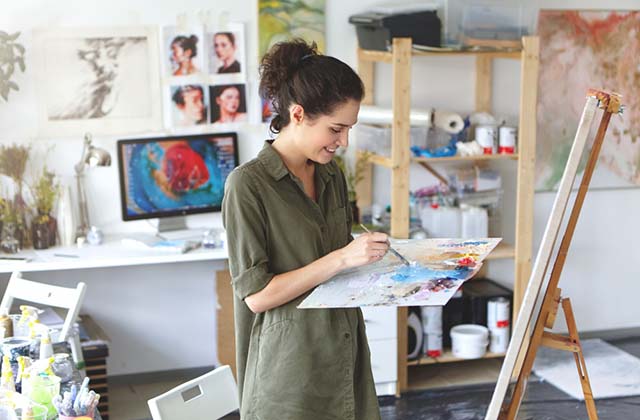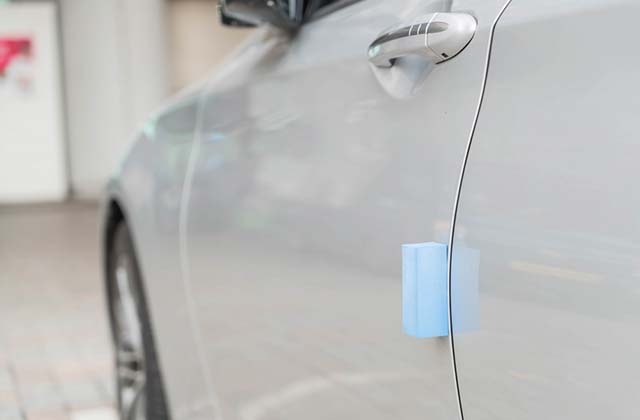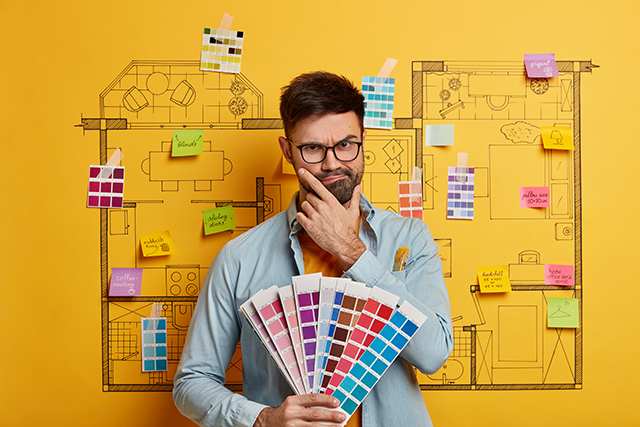Introduction
As an artist, it’s important to stay connected to the world of art and artists. It can be easy to fall into a rut with your work, so I’ve put together a list of ways that you can improve your art skills by working with other artists and improving your own techniques. Concept boards can be improve using advance tools that are highly in-demand in the market.
Learn the basics of anatomy.
Learning the basics of anatomy is a great way to improve your art skills. There are many different types of art, so it’s important to focus on what type you want to do. For example, if you’re interested in traditional painting and drawing, learning anatomy will help you create more realistic images.
Learning how to draw can be hard at first because there are so many things that need to be learned before being able to draw well. However, once you get familiar with the basic techniques involved in drawing, it will become easier over time – especially if done regularly! It may seem overwhelming at first but don’t worry – we’re here with some helpful tips on improving your artistic skill set 🙂
Doodle every day.
Doodle every day.
There are many ways to improve your artistic skills and get better at drawing and painting, but one of the best ways is to doodle. Doodling is a great way to practice drawing, relax, learn new things and be more creative. It can also help you think clearer and solve problems by giving your brain time-out from thinking too hard about something else.
Study work from other artists.
- Study the work of other artists.
- Look at art from different periods, including contemporary work and even older paintings or sculptures.
- Look at art from different cultures, like Asian or European art.
- Look at art from various mediums and styles, like oil paintings vs charcoal drawings vs photography.
Make a list of what you like and dislike about your art.
This is a great way to understand your own preferences. Make a list of everything you like and dislike about your art, even the negative things. This includes the type of supplies you use, mediums, techniques, and anything else that comes to mind. Now that you have your list in front of you on paper (or computer screen), think about each item on it individually and rate how much it bothers or pleases you by placing numbers next to each one:
- 1 = strongly dislike
- 2 = dislike
- 3 = neither like nor dislike
- 4 = like moderately
- 5 = like very much
Schedule time for practice in your daily routine.
To become a better artist, you have to make time for art. It’s that simple—but it can be hard to do if your schedule is already packed with work and family obligations.
You’ll be more likely to stick with your practice if you don’t have to think about whether or not you “have time” for it. Instead, set aside specific times each day or week when you know that’s when your practice will take place. This way, rather than thinking about all of the other things vying for your attention at any given moment, simply knowing what time it is helps keep distractions out of the picture and lets you focus on improving as an artist!
Learn art fundamentals about perspective, color theory, composition and more.
“What is art?” is a question that has no definitive answer, but there are many aspects of it that can be learned and applied. Learning about the fundamentals of art will help you improve your own artwork and understand other artists’ work too.
Art fundamentals include things like perspective, color theory, composition, and so on. You might have learned some of these things in class when you were younger—or perhaps you didn’t learn them at all! If this sounds like you (and if you’re an artist who wants to make better art), then we’ve got some tips for how to get started improving your skillset here on the site:
- Understanding The Basics Of Perspective In Art
- How To Learn About Composition In Drawing & Painting
- 4 Tips For Improving Your Paintings’ Color Theory
Figure out what style you want to pursue and try it out.
Try out a variety of different styles, and see which you find the most fun and inspiring to draw. This can be done by simply drawing the same subject in a variety of styles, or just by looking actively at other artists’ work and trying to emulate it. Whatever method you choose, try to choose an artistic style that appeals to you and suits how you want your artwork to look.
You’ll also want to consider what type of artwork suits your needs and personality, as well as how much time and effort (and money) are involved in producing said pieces. For example, if all you want is some sketches for yourself or family members for birthdays or holidays, pencil drawings would probably suffice—but if there’s any chance someone else might see them too (such as if they’re going up on social media), then perhaps something with more detail would be better suited for framing purposes (such as acrylics).
Experiment with new mediums.
The first step to improving your artistic skills is to experiment with new media. Explore different mediums such as oil paint, watercolor, pastels and pencils. Find out which one you prefer and then hone your skills by practicing regularly. If you don’t like any of the mediums that you try then try something else!
Practice drawing things that you care about or find interesting.
- Draw things that you care about or find interesting. Drawing something you’re interested in will help you learn more about it. For example, if you love cats and want to draw them, then practice drawing kittens and cat breeds and their body structures.
- Find an art teacher or mentor who can help improve your skills. If there are no art teachers in your area, ask friends for recommendations of people who might be able to give feedback on your work and point out any errors or problems with what you have created
Keep a sketchbook on hand at all times.
If you’re ready to start practicing your skills, it can be helpful to keep a small sketchbook in hand at all times. A sketchbook is easy to carry and can help you capture ideas as they come to mind, even if you don’t have time for formal drawing sessions.
Sketching is an excellent way to practice basic drawing skills and develop your eye for composition. Sketching allows us to experiment with our ideas without worrying about getting it “right” the first time around – after all, these sketches are only meant for practice! So go ahead: take out that trusty pen or pencil (and maybe some watercolors) and fill up some pages with your own thoughtful scribbles!
To get better at art, you have to show up often, not just once or twice a week or when inspiration strikes.
It’s important to show up often, not just once or twice a week or when inspiration strikes. If you’re trying to build your skills, you will need to set aside time for making art every day, even if it’s just for 15 minutes. You can’t learn how to draw by accident; it takes practice to get better at drawing.
The same goes for any other kind of skill—you need regular practice if you want to improve quickly and keep improving over time.
When it comes down to it though…the most important thing is showing up consistently. Don’t wait until the next day because it’s too late today; don’t wait until tomorrow either because then you’ll never get started today! Read more about how popular artists like Dean Mortensen charge out their time for storyboarding, frame rates, hourly rates.
Conclusion
With all this said, your art skills are only as good as the time you put into practicing them. If you practice every day, consistently, and in a way that challenges you to grow as an artist – then your skill level will improve over time. If not? Then it won’t matter how many books or classes or workshops you take because none of them will be able to help.



